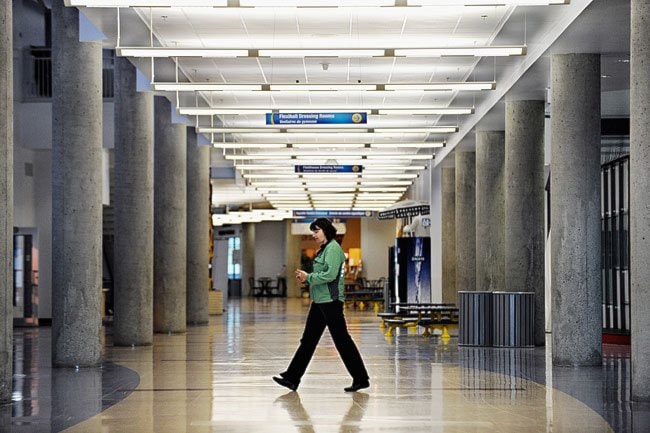Reduce, reuse, recycle: that’s how the Canada Games Centre is powering its expanded waste-heat recovery system.
City council approved the project, which is expected to begin this summer if the consultants are available, said Matthew Grant, executive assistant to the city manager.
“The fundamental elements are already in place. We’re just expanding on it,” said Brian Crist, the city’s director of operations.
The system will trap warm air from the ice plant compressors and from outside to heat various areas of the complex. This will decrease the use of electricity and diesel fuel and will reduce greenhouse gas emissions, said Crist.
Warm air from the ice plant compressors is already being used to heat the swimming pool.
The new system will use that waste heat for the domestic hot water supply, such as showers and interior taps.
Air from the outside will be brought into the centre and heated with warm, moist air from the pool area.
Using heat from the compressors will make space heating in the change room more efficient.
And variable-speed drives, which are more efficient electrical motors for air handling units in the pool area, will be installed.
Once the new methods are in place, an energy modelling system will allow the city to “analyze the data and get a better understanding of how much heat and energy they are recovering and be able to be more efficient at using energy they do capture,” said Crist.
“It will, in essence, allow us to better manage the energy in the building.”
In turn, this would lower the centre’s utility bill by about $50,000, Crist estimated.
The Canada Games Centre has the highest utility bill of any of the city’s buildings - about $1 million each year.
“If we can save a little bit off of a great big number, it just makes sense to try to be as energy efficient in that building as possible.”
But before the savings can begin, $480,000 is going into the project.
The government of Yukon and the federal government’s Canada-Yukon Municipal Rural Infrastructure Fund each funded $160,000.
“We’re happy to support it because it will result in reduced energy cost,” said Shari Borgford, regional director of Cannor, the territory’s distributor of the Canada-Yukon fund.
The territory’s contribution to the project was made in order to help the climate change issue, said Phil MacDonald, federal fund co-ordinator for the Yukon government.
The Gas Tax Fund and the city each contributed an additional $80,000.
“This project just really, really fits with their mandates to allow Whitehorse to become a more sustainable city,” said Crist. “This funding is just helping us fulfill the obligations of our sustainability plan and in the end it just allows us to become a more sustainable city.”
Contact Larissa Robyn Johnston at larissaj@yukon-news.com
